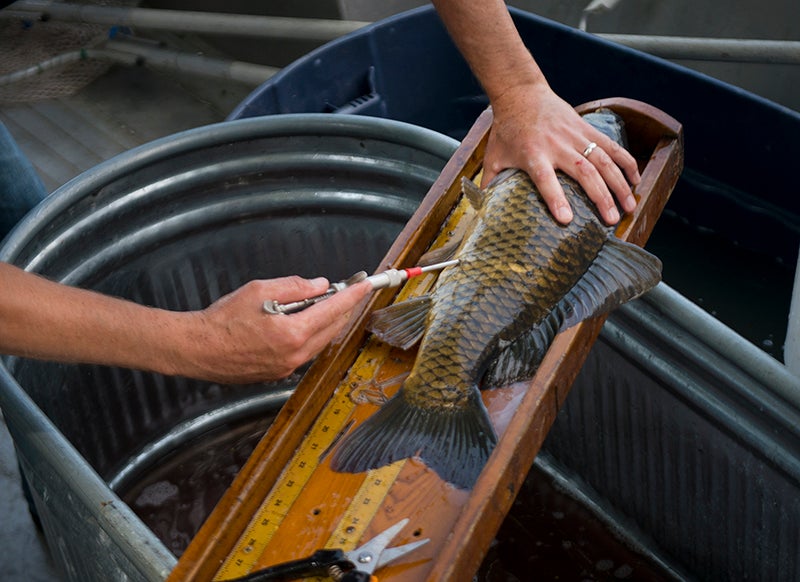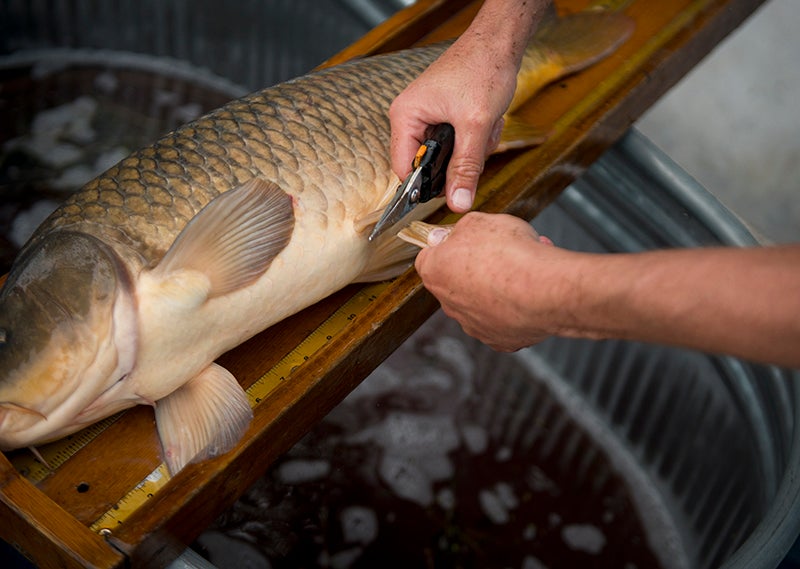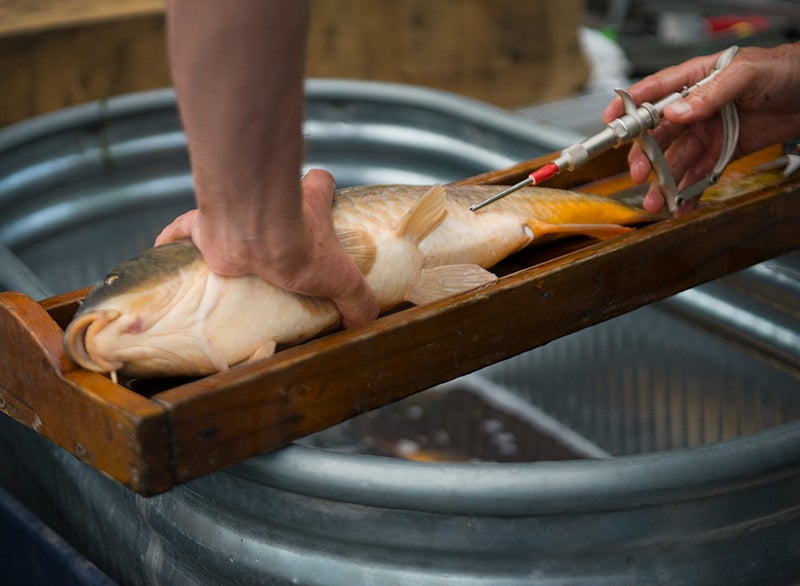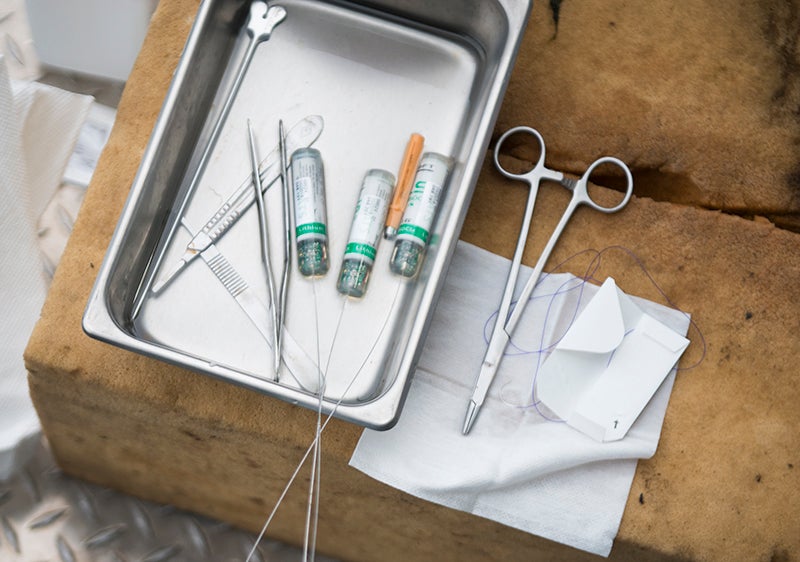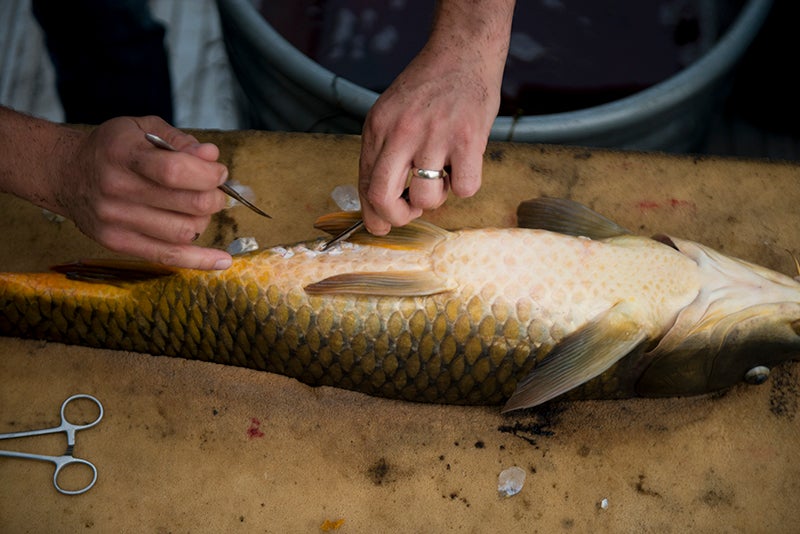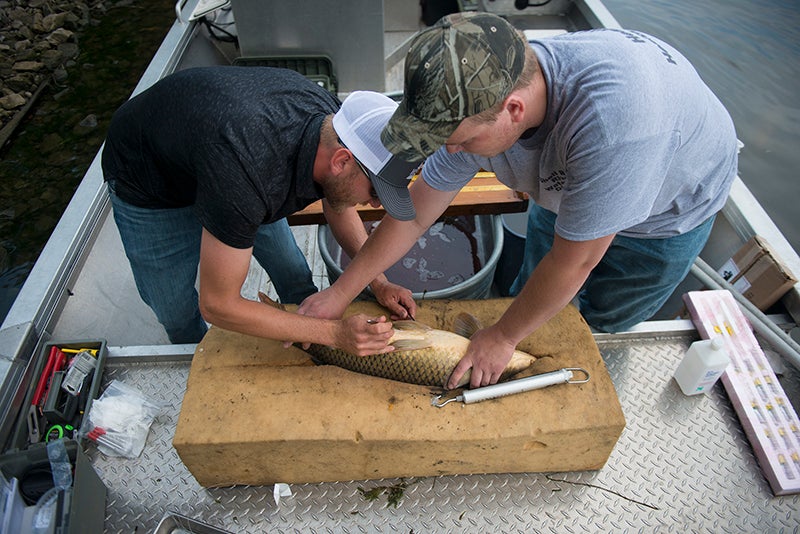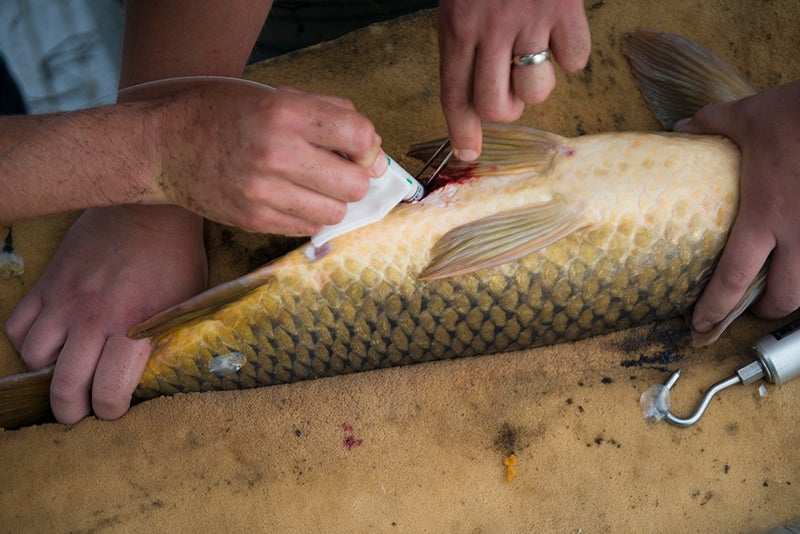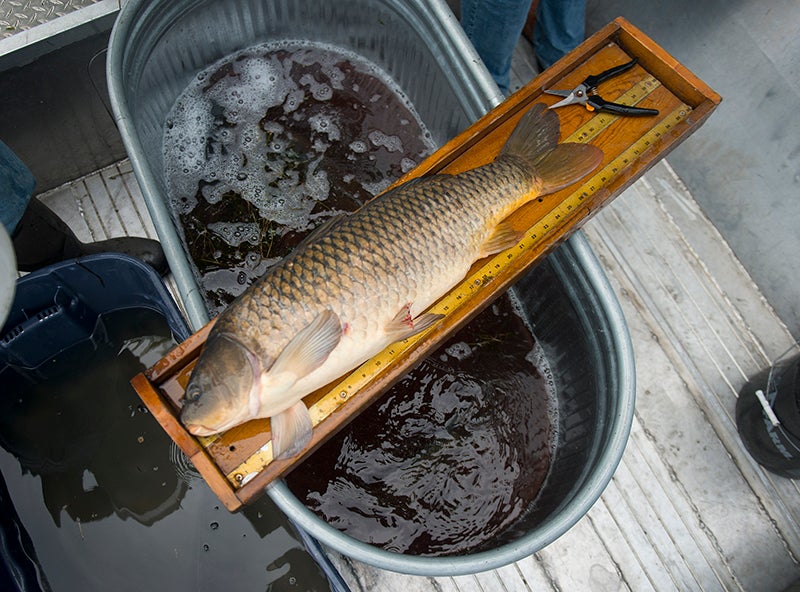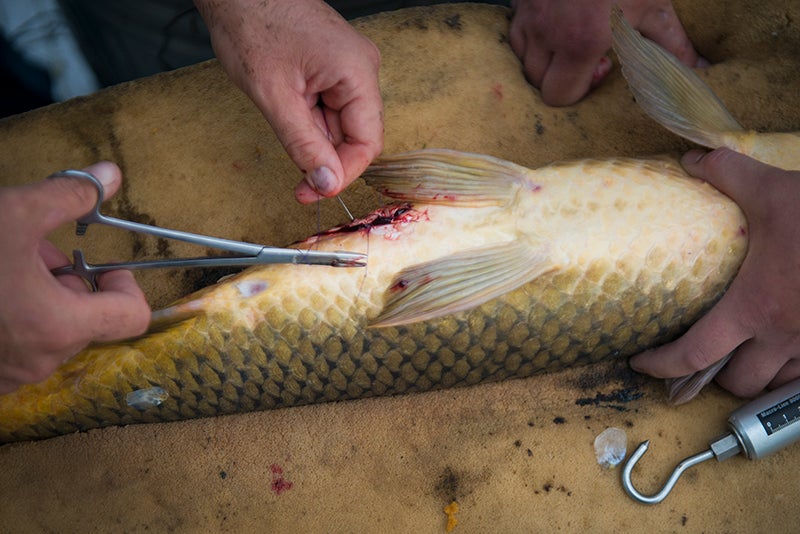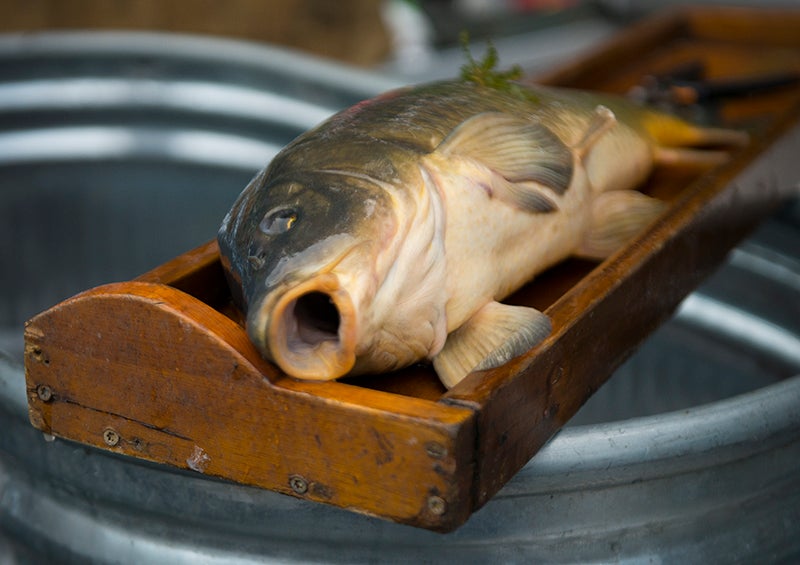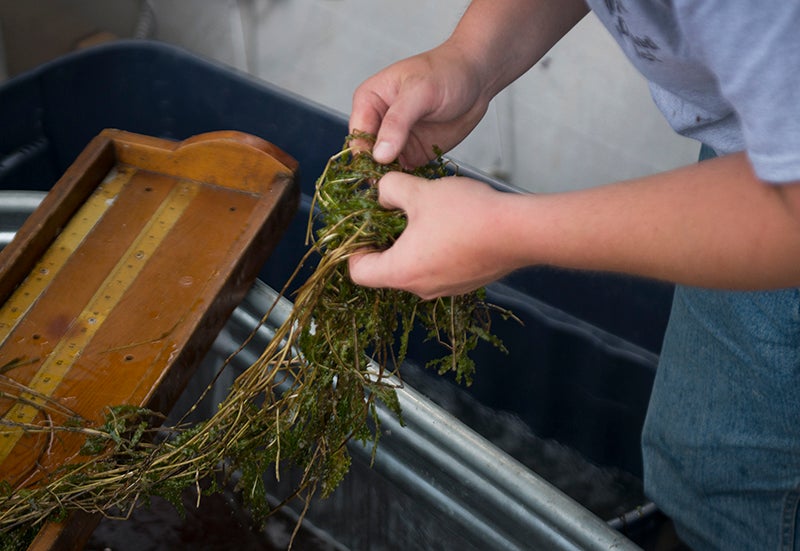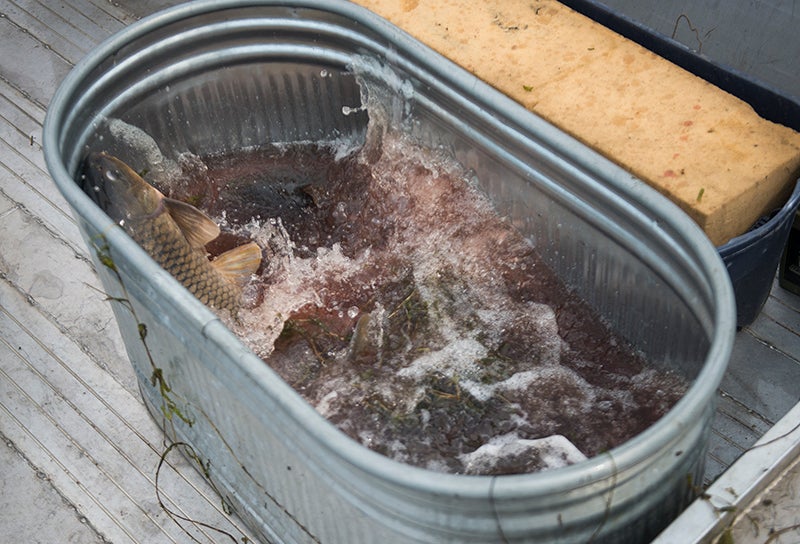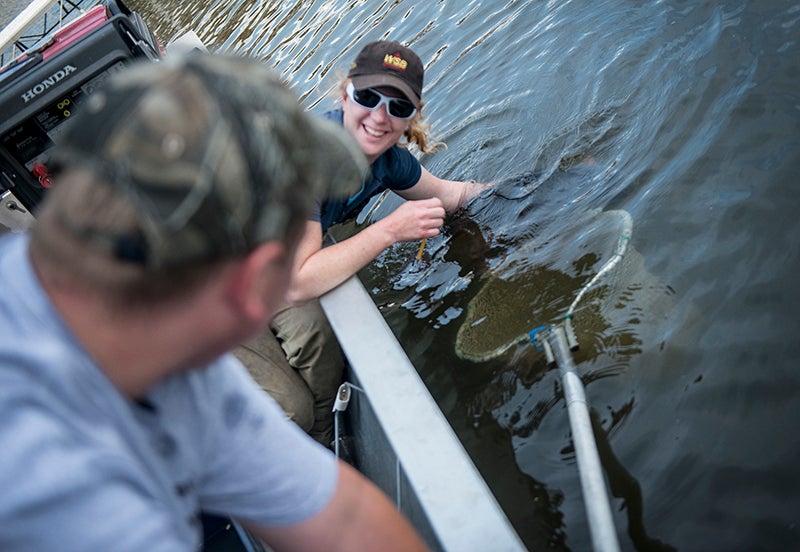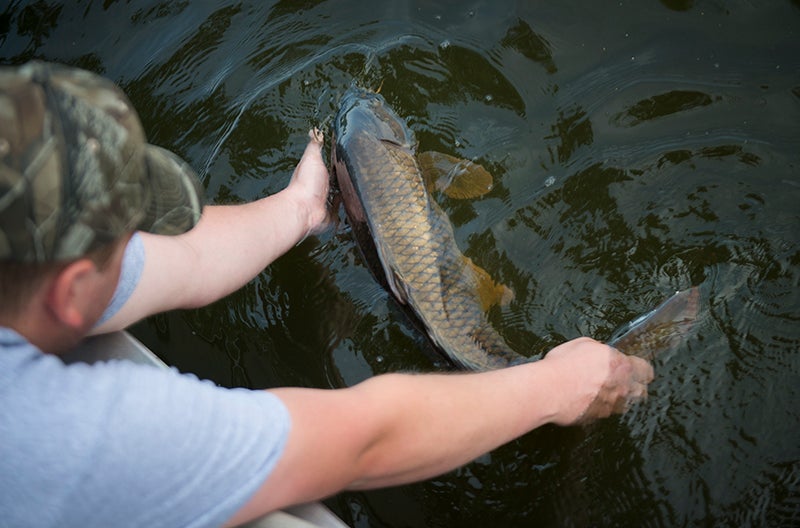Fighting something fishy
Published 8:41 pm Friday, June 29, 2018
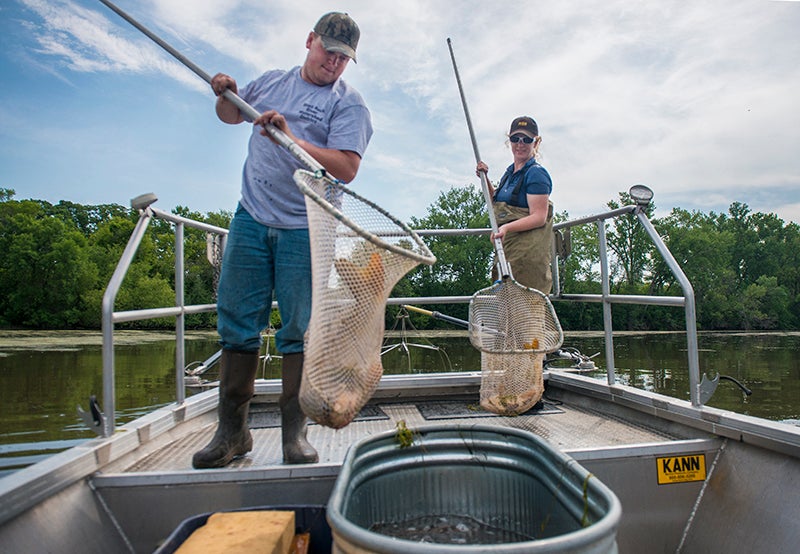
- Scott Christenson, a conservation technician with Shell Rock River Watershed District, and Mary Newman, an environmental scientist with WSB, catch carp on Fountain Lake earlier this month in order to tag them for tracking purposes. - Colleen Harrison/Albert Lea Tribune
In hopes of managing carp, watershed district gathers data
Editor’s note: This is the first in a five-part series on carp management efforts in the area.
Although the project’s scope does not reach Orwellian levels, this summer and fall, one thing is clear: If you’re a carp in Fountain Lake, the Watershed District is watching you.
The Shell Rock River Watershed District is positioning itself to take on further management of Fountain Lake’s common carp population through a tagging and tracking project partially and most recently carried out on June 6.
To do so, the Watershed District has enlisted the help of WSB & Associates, a consulting and design firm out of St. Paul that provides environmental services among its handful of stated specialties.
This year’s tagging and tracking efforts follow similar activities in 2016, both in an effort to gain more information on how the fish move and whether current maintenance strategies are working properly.
“We collect data to understand the scale and the extent of the problem,” WSB senior ecologist Tony Havranek said.
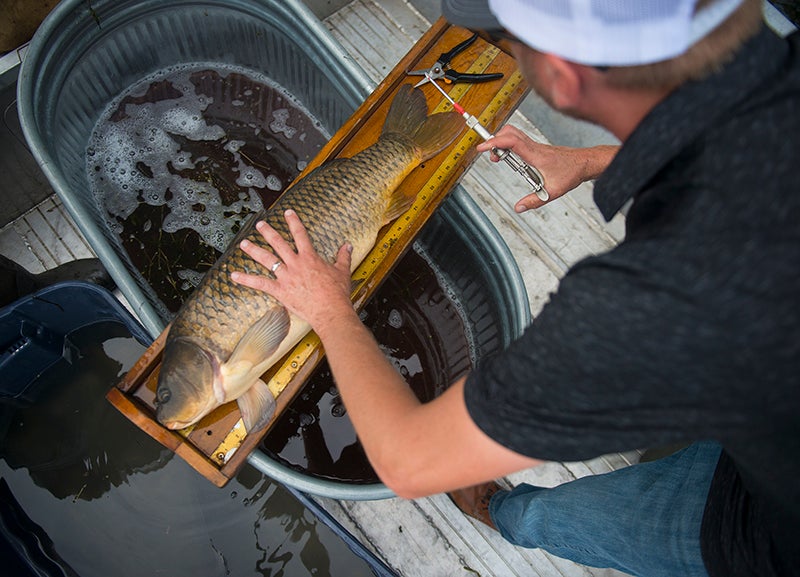
Tony Havranek, a senior ecologist with WSB, measures a carp before PIT tagging it. – Colleen Harrison/Albert Lea Tribune
The tagging process
The Minnesota DNR lists the common carp as a regulated invasive species. According to Watershed District conservation technician Scott Christenson, too many common carp can disrupt a lake’s ecosystem. So, with a trio on a boat, Shell Rock River Watershed District and WSB are out to disrupt the disruption. To do so, they went fishing.
Electrofishing.
On a boat reminiscent of a mechanized angler fish, two booms hold “droppers” — long, thin fingers of current-conducting material on a relaxed hand. A generator on the boat provides an electric current, which travels out to the booms and down the droppers, Havranek said. The process creates an electrical field between the droppers and the hull of the boat that is approximately 8 feet wide, 10 feet long and 3 feet deep.
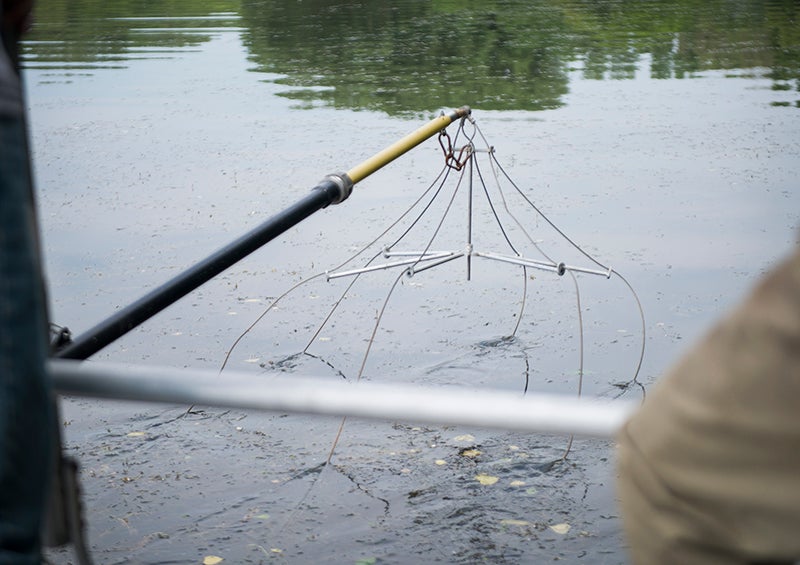
Two booms hold “droppers” — long, thin fingers of current-conducting material on a relaxed hand — used to send an electric current through the water in order to catch fish. – Colleen Harrison/Albert Lea Tribune
“The fish are stunned, not killed or injured,” Havranek said. As they float to the surface like ice cubes in a glass, Havranek’s team — often a team of just two is sufficient, he said — can net them and bring them on board into waiting holding tanks for later measurements and tagging. He will start tagging the fish when he has about 20 to 30 onboard, Havranek said.
To tag common carp, Christensen said the Watershed District is using both radio telemetry tags and passive integrated transponder tags. The former, utilized in far fewer quantities, allows Christensen to track each fish using its own unique frequency. In the winter, he can be out on the ice with a signal reader to uncover where carp may be aggregating, hunting for fish like someone with a metal detector hunts for treasure. The radio tag is about the size of a baby carrot. Because of its size, Christenson said they try to put radio tags into larger fish because they have a better chance of surviving the required surgery.
PIT tags, though — close to 2 inches long and thinner than a pencil, Havranek said — operate more like an airport metal detector. For every second a tagged fish is within the 20-inch detection range of a tag station located on Fountain Lake’s connecting channels, Havranek said the tag sends its number to a data logger, wrapped up with the bow of a time and date stamp to tell the Watershed District someone is loitering.
Both types of tags were installed on June 6.
- A PIT tag is inserted into a carp via a hypodermic needle. – Colleen Harrison/Albert Lea Tribune
- A carp’s fin is clipped so that it will be easier to identify as tagged if it’s caught again. WSB senior ecologist Tony Havranek said the clipping does not affect the carp’s ability to swim. – Colleen Harrison/Albert Lea Tribune
- Havranek PIT tags a carp before releasing it back into Fountain Lake. For every second a tagged fish is within the 20-inch detection range of a tag station located on Fountain Lake’s connecting channels, the tag sends its number to a data logger with the time and date stamp to tell the Watershed District a fish is encroaching on the barrier. – Colleen Harrison/Albert Lea Tribune
- Radio tags are sterilized before being surgically implanted into carp. – Colleen Harrison/Albert Lea Tribune
- Scales are removed so an incision can be made to radio tag a carp. Havranek said the scales will grow back. – Colleen Harrison/Albert Lea Tribune
- Havranek makes an incision to surgically implant a radio tag in a carp while Christenson holds the fish still. – Colleen Harrison/Albert Lea Tribune
- A radio tag is surgically implanted in a carp caught on Fountain Lake earlier this month. – Colleen Harrison/Albert Lea Tribune
- Common carp are considered one of the most damaging aquatic invasive species because of their wide distribution and severe impact in lakes and wetlands. Their feeding disrupts shallowly rooted plants, muddying the water, and they release phosphorus that increases algae. – Colleen Harrison/Albert Lea Tribune
- An incision is sewed up after a carp has been radio tagged. – Colleen Harrison/Albert Lea Tribune
“The more that we can do while we have fish in our hands, we’re definitely going to try to take advantage of that,” Christenson said.
Fish to be radio tagged go in an anaesthetic bath before hitting the operating table (which, in Havranek’s boat, is a piece of foam with a groove in it that helps stabilize the fish. The abdomen is cut open, the tag is surgically implanted, and the fish is sutured. As with any surgery, there’s a recovery time, Havranek said, so he said he tries to wait a week or two post-surgery before doing radio telemetry work as the fish rejoins the population and resumes regular activity.
PIT tags are a little different.
“The PIT tag, because it’s so small, we don’t have to surgically implant them,” Havranek said. “We actually inject them with a small hypodermic needle.”
The trick is to get between the rigid scales into the soft tissue of the abdomen, he said.
It takes just a minute, maybe two, for the fish to be measured, receive its PIT tag, get scanned into the system — think of a hand-held scanner at a grocery store, Havranek said — and be returned to the water. It’s an outpatient procedure.
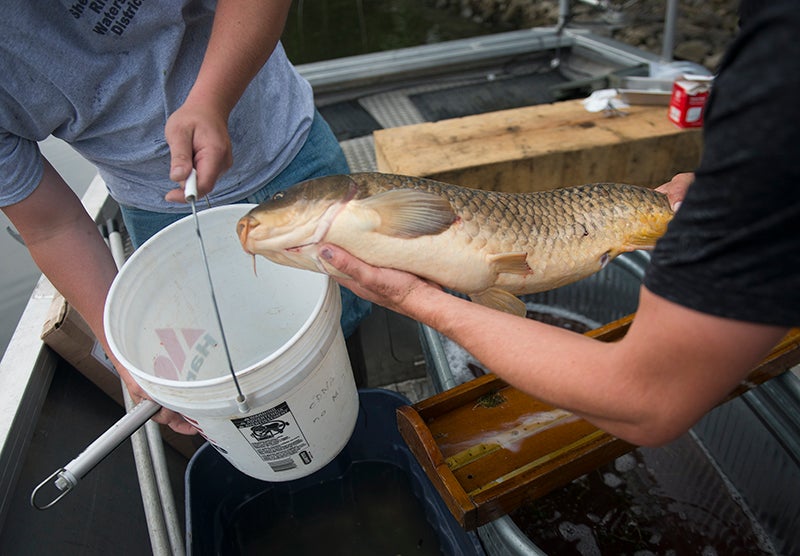
Havranek passes off a carp to Christenson to be weighed. – Colleen Harrison/Albert Lea Tribune
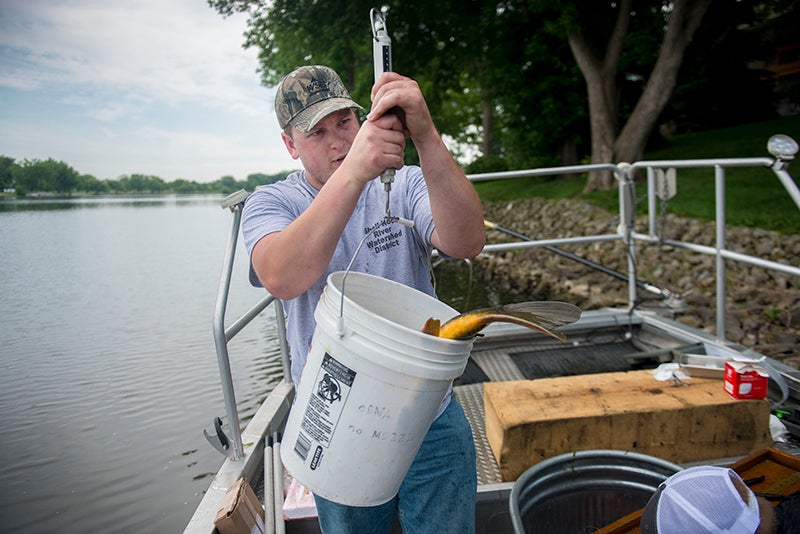
Scott Christenson weighs a carp caught on Fountain Lake earlier this month. – Colleen Harrison/Albert Lea Tribune
The more methods, the merrier
After the next electrofishing event, Havranek said the strategy will shift to a stationary method: trap netting.
A standard trap net has a lead net 50 to 100 feet in length, which gets anchored to the shore in a shallow part of the lake. When fish hit the lead net, they follow it out into the deep, where a metal frame waits, about 2 feet high and 3 feet wide. The frame transitions into a series of five hoops that, together, form a funnel.
“They get guided farther and farther inside the net,” Havranek said.
Once the fish swim in, they can’t swim back out.
Mini trap nets accomplish the same goal, but instead target fish sized between 2 and 6 inches. Using mini trap nets helps Havranek and Christenson determine whether there are juvenile carp in the lake, and if carp are reproducing, Havranek said.
By using multiple methods to catch and release, Havranek said the team avoids data skewed through gear bias and instead can establish a more representative sample of fish in the lake.
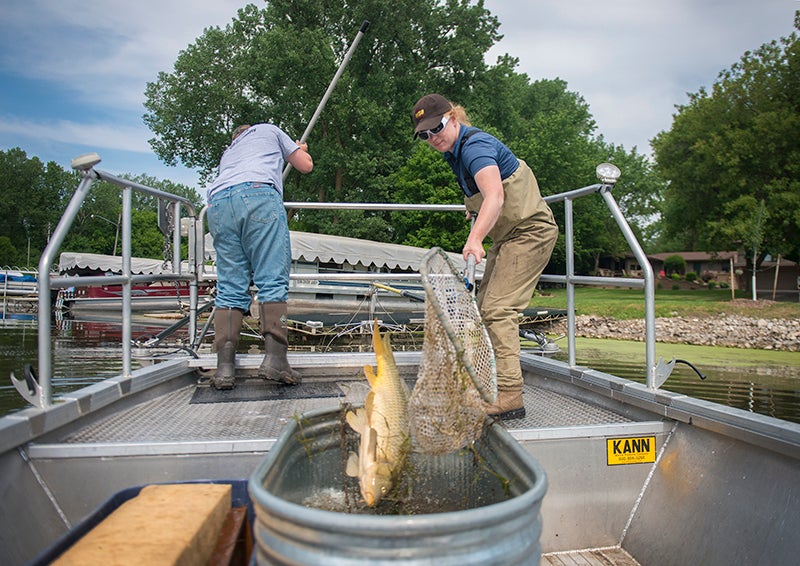
Newman flips a carp into a holding tank to be tagged after catching it on Fountain Lake earlier this month. – Colleen Harrison/Albert Lea Tribune
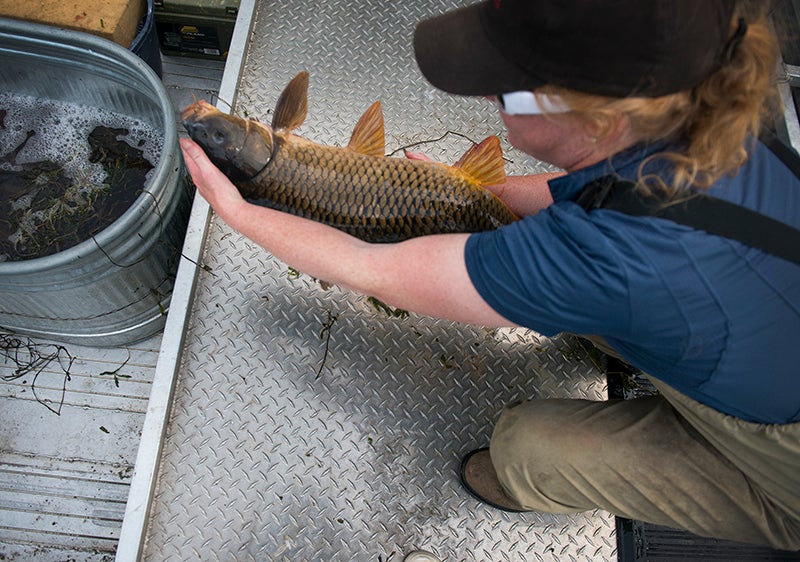
WSB environmental scientist Mary Newman puts a carp back into a holding tank after it flopped out onto the boat deck while the crew was electrofishing earlier this month. – Colleen Harrison/Albert Lea Tribune
Working toward a common goal
On June 6, Havranek said the team on the water put radio tags on five common carp and PIT tags on 34 in Fountain Lake through electrofishing. It isn’t quite the number he was hoping for.
“I was hoping to get a couple hundred, but, you know, that was the first time we’d been out electrofishing on the lake, so there might be other areas we just haven’t realized hold more fish,” he said.
Christenson and Havranek are planning a July date to continue tagging as well as further tagging in the fall, in addition to trap netting. In total, Christenson said this year’s goal is to have 300 PIT tags and 20 radio tags out in Fountain Lake by the end of the process.
- Common carp are considered one of the most damaging aquatic invasive species because of their wide distribution and severe impact in lakes and wetlands. Their feeding disrupts shallowly rooted plants, muddying the water, and they release phosphorus that increases algae. – Colleen Harrison/Albert Lea Tribune
- Christenson checks lake plants for eggs to make sure carp aren’t reproducing in Fountain Lake. – Colleen Harrison/Albert Lea Tribune
- Carp are contained in a holding tank until they can either be PIT or radio tagged. – Colleen Harrison/Albert Lea Tribune
- Newman shows Christenson how to “tickle” the carp under the chin to help them come out of anesthesia faster. – Colleen Harrison/Albert Lea Tribune
- Christenson releases a carp back into a Fountain Lake, making sure it has woken up enough from anesthesia so it can swim away. Clove oil is used to subdue the carp that have radio tags surgically implanted. – Colleen Harrison/Albert Lea Tribune
Find the second part of the series here.
Find the third part of the series here.
Find the fourth part of the series here.
Find the fifth part of the series here.


